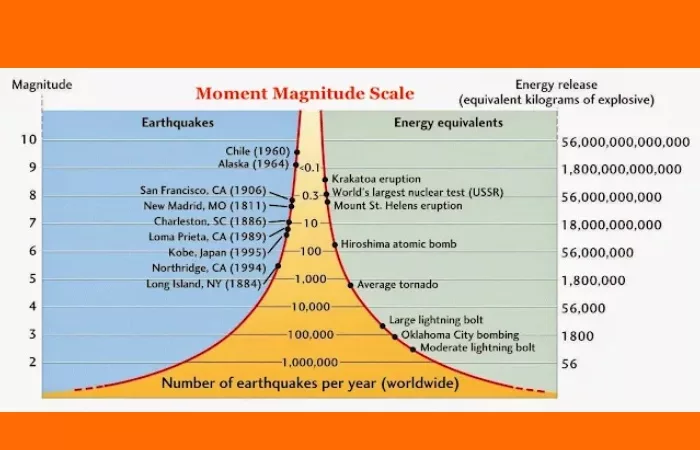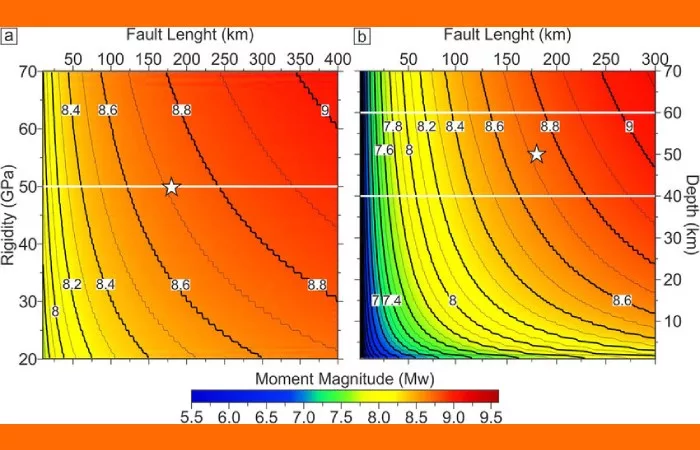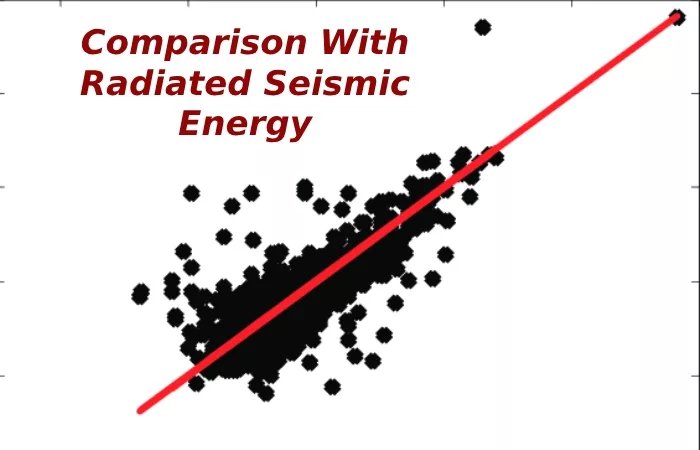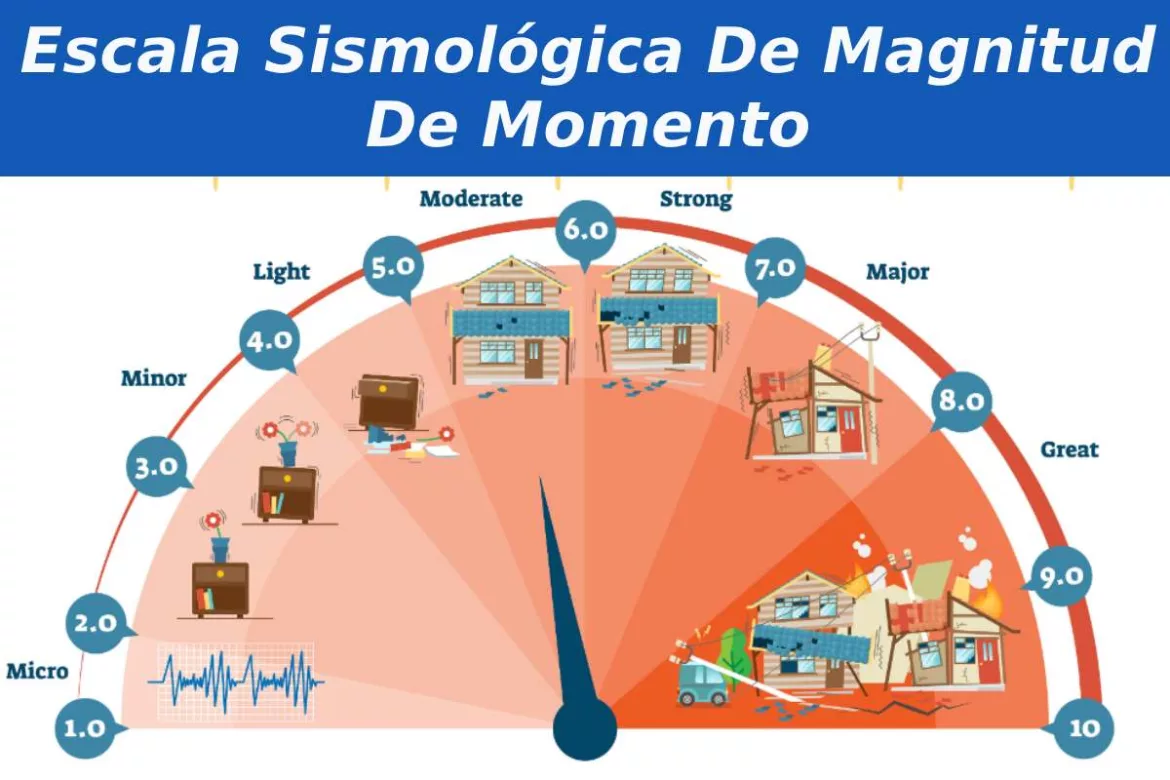Table of Contents
Intro:
In this article, we discuss about a Spanish term escala sismológica de magnitud de momento which means seismological moment magnitude scale (Mw). Here, we will discover the intricacies of the Mw scale, exploring its origins, mechanics, and significance in assessing seismic activity. The seismological moment magnitude scale is a logarithmic scale used to measure and compare earthquakes. It is based on measuring the total energy released in an earthquake. Earthquakes have been a constant reminder of the dynamic nature of our planet, causing both awe and fear throughout human history. Scientists employ various measurement scales to quantify and understand the intensity of these seismic events. One of the most widely used and comprehensive scales is the Seismological Moment Magnitude Scale (Mw).
Historical Background Of Escala Sismológica De Magnitud De Momento
Before adopting the moment magnitude scale, seismic intensity was primarily measured using the Richter scale, which was developed by Charles F. Richter in 1935. However, the Richter scale had limitations, particularly for more significant earthquakes, and could not accurately represent the energy release associated with seismic events. In response to these limitations, the moment magnitude scale was introduced as a more sophisticated and reliable alternative.
An advantage of the moment magnitude scale is that it does not saturate near high values. Unlike other scales, this one does not have a value above which all the largest earthquakes reflect very similar magnitudes. Another advantage of this scale is that it coincides and continues with the parameters of the Richter seismological scale. For these reasons, the moment seismologists most use magnitude scale to measure and compare large earthquakes. The National Earthquake Information Center, part of the United States Geological Survey, uses this scale to measure earthquakes greater than 6.9. Despite the above, the Richter seismological scale is the one that enjoys the most popularity in the press.
What Does The Escala Sismológica De Magnitud De Momento Measure?

This measurement can determine the magnitude of an earthquake through the waves it emits. However, Professor Nitescu explained the following: “The moment magnitude scale is an improvement on the Richter scale. Charles Francis Richter developed the Richter scale in the first half of the 20th century and was more suited to California tremors and earthquakes.
Furthermore, he added: “This scale was used to record a seismometer and used the amplitude of some waves recorded by this device. The problem with this scale was that it was not working well for large-magnitude earthquakes. For this reason, it was improved by using more parameters, such as the force needed on the fault for the earthquake to occur.”
In short, the moment magnitude scale was simply an improvement of the Richter scale to measure the magnitude of telluric movements more accurately and more in line. Thus, with the parameters necessary to obtain accurate information about earthquakes. However, there are other methods to determine the magnitude of an earthquake, which we will tell you about below.
Other Measurement Systems For Tremors
Mercalli Scale: According to Nitescu’s explanation, this scale is subjective and does not have an objective measurement of the earthquake energy. Instead, it measures the impact and intensity of an earthquake somewhere on Earth. It is based mainly on the damage and destruction it caused where it occurred.
Seismic Moment Scale: This could be one of the most accurate, as it is a measure used to quantify the total energy released during a seismic event. By providing a more precise and complete estimate of the magnitude of an earthquake. It is calculated using information about the stiffness of the rocks involved in the fault, the rupture area, and the displacement along the fault.
Moment Magnitude (Mw)

Unlike other measurements, moment magnitude is directly related to the properties of the fault. In equation form:
Mw = logM0/1.5-10.73
M0 is the seismic moment in dyne-cm and can be definite by the physical assets of the fault:
- M0 = μDS = μDfL2
- μ: stiffness at source depth
- D: average slip at fault
- S: the area of the fault
- S = fL2
- f: ratio of width to length
- L: fault length
In simple terms, the moment magnitude is directly related to the area of the fault displaced during the earthquake. Hence, how far the fault slipped, and how much the fault material resisted the displacement. Because this magnitude is directly linked to failure properties, scientists consider it more useful.
Five Advantages of the Escala Sismológica De Magnitud De Momento:
- Accuracy for Large Earthquakes: The Mw scale is advantageous for measuring massive earthquakes. Whereas the Richter scale tends to saturate and underestimate the true magnitude.
- Consistency Across Geological Settings: Unlike the Richter scale, developed for California’s geology, the moment magnitude scale provides a consistent measure of earthquake size across various geological settings worldwide.
- Incorporation of Seismic Energy: By considering the total seismic energy release, the Mw scale offers a more comprehensive assessment of an earthquake’s potential impact.
- Global Applicability: The Mw scale is universally accepted and used by seismologists worldwide, ensuring standardized reporting and analysis of seismic events.
- Applications and Implications: The moment magnitude scale is crucial in earthquake research, hazard assessment, and public safety. Governments, emergency responders, and planners rely on accurate magnitude assessments to develop seismic building codes, design infrastructure, and implement emergency response strategies.
Additionally, scientists use the data collected from seismic events to study the Earth’s interior, fault systems, and the dynamics of tectonic plates. This information contributes to our understanding of earthquake mechanisms. By helping to refine predictive models and reduce the impact of seismic hazards on communities.
Comparison With Radiated Seismic Energy

Potential energy is accumulated at the fault edge in the form of stress. During an earthquake, the deposited energy is changed and results in:
- Breaking and deformation of rocks
- Heat
- Radiated seismic energy E_{s}
The seismic moment M_{0} Measures the total amount of energy that is transformed during the earthquake. Only a tiny fraction of the seismic moment M_{0} is converted into radiated seismic energy E_{s}, which seismographs record.
Conclusion
Hence, Escala Sismológica De Magnitud De Momento represents a significant advancement in seismology. Thus, by offering a more accurate and comprehensive measurement of earthquake size and energy release. From its historical roots to its present-day applications, the Mw scale has become an indispensable tool for understanding and mitigating the impact of seismic events on human societies. As we unravel the mysteries of Earth’s seismic activity, the moment magnitude scale remains at the forefront of earthquake research. For providing valuable insights into the dynamic forces shaping our planet.


